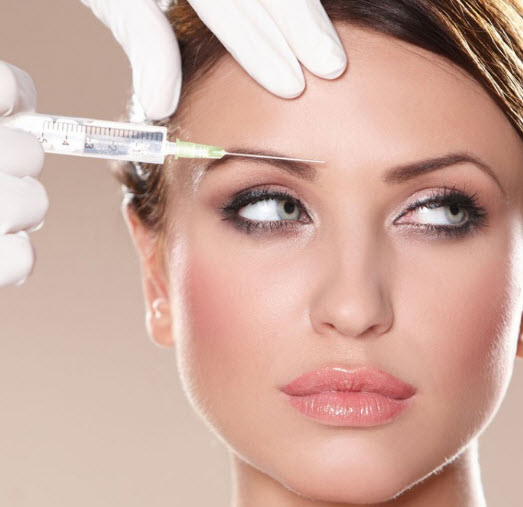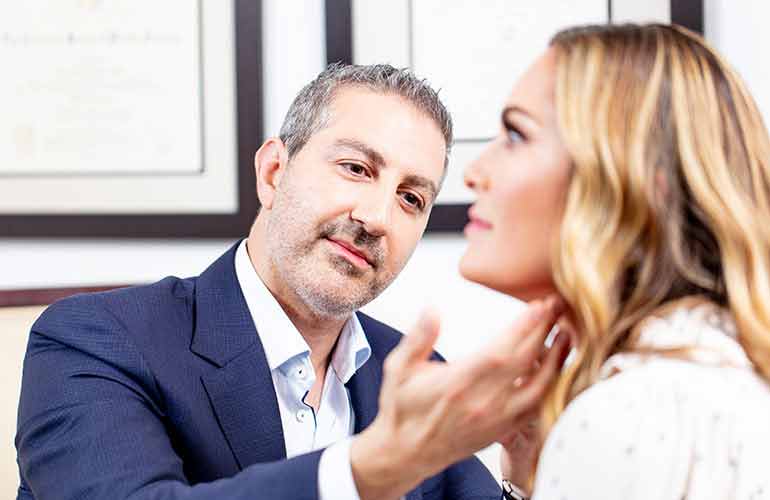Dr. Balikian Discusses the Many Uses of Botox

Today, Botox™ is more than a wrinkle-remedy. It was first approved for cosmetic improvements 30 years ago. But now over 50 percent of the time it is used for therapeutic treatments. From back pain problems to migraines, from twitchy eyelids to sweating, Botox™ is helping people enjoy better health.
Here is a look at what started out as a poison, and has gradually become a medical magic bullet.
It’s a Migraine Remedy
Migraine sufferers have experienced relief with Botox™ since 1992. A surgeon in Beverly Hills reported that his patients getting Botox™ injections were delighted to have fewer headaches, an unexpected side effect. In the following years, tests were done and by 2010 it was officially approved by the Federal Drug Administration for migraines.
Patients get a series of 31 injections around their neck and head. This helps prevent migraines for up to three months.
It’s a Bladder Remedy
An overactive bladder is a major embarrassment for thousands of people. Botox™ has helped many of them. One doctor involved in a study of women called it “one of the most impactful treatments I had never seen.”
Botox™ is FDA-approved for this condition. But it does come with potential side effects. It can slow down the bladder too much. In extreme cases, the patient may need a catheter inserted.
It’s a Depression Remedy
Seeking FDA approval, doctors are conducting a large clinical trial to test whether Botox™ actually helps people through their depression. A small study in 2014 indicated that more than half of the people who got Botox™ had less severe symptoms within six weeks.
Doctors believe it works based on the Facial Feedback hypothesis. This says that our facial expressions shape our mood. And Botox™ can have a major impact on expressions.
It’s a Cold Hands Remedy
There is Cold Hand Clinic at the University of Chicago. Physicians are injecting patients with extremely cold hands with Botox™. It helps relax the muscles, which squeeze the blood vessels, causing bad circulation and the coldness.
As the muscles relax, blood flows more freely from the palm to the tips of the fingers. This increases the temperature in the hands, providing relief from this frustrating problem. Each Botox™ treatment lasts about three months.
It isn’t officially approved for this condition, but doctors are allowed to use it as a treatment. After the FDA has approved any drug for a specific medical condition, as Botox™ was for wrinkles, it can legally be used by physicians in a range of other situations. This is a common practice in medicine.
It’s an Excessive Sweating Remedy
Severe Primary Axillary Hyperhidrosis, usually called excessive sweating, is embarrassing and messy. Patients getting Botox™ for cosmetic reasons reported their sweating was much reduced. This led to medical testing and FDA approval for Botox as a treatment in 2004.
It’s a Crossed-Eyes Remedy
The FDA has approved Botox™ for strabismus, known better as crossed eyes. The condition affects more than 4 percent of the population.
And there’s more:
- Neck spasms: Way back in 2000, the FDA approved Botox injections to treat severe pain in the neck and abnormal head positions, symptoms of Cervical Dystonia.
- Cleft lip scars: Botox™ injections help babies grow up without scars. Infants operated on for cleft lip later get Botox, which stills the muscles, letting the scar heal successfully. It doesn’t yet have FDA approval.
- Abnormal heartbeat: After open-heart surgery, patients can experience abnormal heartbeats. Botox™ injections show promise in preventing this.
It’s a Poison
Botox™ has hundreds of treatment possibilities, from cosmetic to therapeutic. But physicians never forget that it comes with a black box warning on its medical packaging for a reason. Black box is the strongest level of caution label used by the U.S. Food and Drug Administration.
That’s because Botox™ is toxic and its use comes with risks. When administered in microscopic amounts, it is considered safe, in the hands of an experienced physician.
But it does have potential side effects. For example, it can disperse from the site of the injection. This can cause weakness in the muscles and with eyesight. People have experienced respiratory problems and trouble swallowing.
Trust Experience
Richard V. Balikian, M.D., has been helping people in the San Diego area since 2007. He has the training and experience to understand the best remedies, including Botox™, for a range of cosmetic problems.
Dr. Balikian has a reputation for really listening to each patient. He makes sure he understands the person’s expectations and hopes. He thoroughly explains treatment options, both surgical and non-surgical, and what are realistic outcomes.
Dr. Balikian is double board certified:
- American Board of Facial Plastic and Reconstructive Surgery
- American Board of Otolaryngology, Head and Neck Surgery
He taught at the Indiana University School of Medicine as Clinical Instructor of Facial Plastic Surgery. Currently he works with the Face-to-Face program, helping victims of domestic violence with cosmetic and reconstructive surgery.
Interested in Botox™ and other anti-aging measures? Call the team at Dr. Balikian’s office today for a free, no-obligation consultation.


